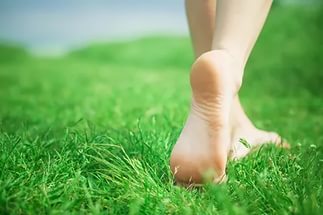SHARE WITH FRIENDS:
There are certain areas in our body that, although they do not affect our general condition so badly, the pain makes a person suffer a lot. In fact, it is the heel and the sole of the foot that cause us to walk properly. Compensation also acts as a shock absorber. This is one of the most important functions of the foot. So it is natural that the pain in it causes a lot of discomfort.

Contents [Close]
- Signs and symptoms
- Why does pain appear in the heel?
- Compensation pixi
- Fascia (compensatory muscle membrane)
- Payli injuries
- Useful tips
- Treatment with folk remedies
Signs and symptoms
Compensation pain begins slowly, without external injuries. This pain is mainly caused by wearing tight shoes. Hard-soled shoes can also cause heel swelling. After rest, the pain symptoms intensify. After waking up, the patient is bothered by pain throughout the day. With a little effort, the pain can go away on its own, and sometimes get worse during the day.
Why does pain appear in the heel?
The calcaneus is stronger than other bones. It has a porous structure in which many blood vessels and nerve endings are located. That is why compensation is very sensitive. So why does compensation hurt? Below are the reasons for this.
Compensation pixi
It is a bone tumor that forms under the skin at the site of the heel bump. The disease can be caused mainly by permanent and long-term damage to the longitudinal apparatus of the ankle (dancers, runners, etc.), as well as flat feet. Compensation pixie can sometimes also occur as a result of a rapid increase in body weight. Rarely occurs after infectious diseases, gout. The intensity of the pain does not always depend on the size of the pix. Bone structures, many of which are extremely small and not even visible on X-rays, can cause severe pain. There will be no external signs of compensation pixie.
Fascia (compensatory muscle membrane)
Compensation is an excessive strain that occurs as a result of wearing shoes with very low heels. The heel curve forms a wide line from the heel to the bones of the sole of the foot. The pain is where the line is connected to the compensation.
Payli injuries
As a result of wearing high-heeled shoes, the heel is strained. If this situation continues, it will lead to an increase in existing flatulence.
When you accidentally hit the calf bone, pain may occur in the heel. In this case, the adjacent tissues become inflamed due to the shock. The pain is so intense and excruciating that it can get worse as you walk.
In addition, heel pain can also be caused by certain infectious diseases (gonorrhea, chlamydia, etc.) that cause inflammation of the heel. Compensation hurts not only when walking, but also when lying down, for example, when lying down.
Usually, inflammation is accompanied by the following diseases: psoriatic arthritis, gout, inflammation of the arteries, etc. In this case, the pain may be a complication of the disease.
Useful tips
Of course, every disease should be treated by a specialist. An X-ray should be taken to determine the course of the injury.
We recommend the following in order to prevent the disease and alleviate the pain, even if only slightly.
- Be careful when choosing shoes. Shoes should be comfortable to walk on. Note that quality shoes will have a patak made of soft fabric with a special lift.
- If you feel pain in the heel, it is better not to do sports. It is not possible to run, jump, lift heavy loads, walk a lot. These circumstances may exacerbate the situation.
- Before going to bed, apply badger oil on the heel.
- More rest is needed for the effects of the treatments to be effective during the treatment of compensatory pain.
- If necessary, avoid high-heeled shoes altogether. It is better to put special orthopedic pads on the shoes.
- If the compensation pain is persistent and severe, be sure to go to the hospital.
Treatment with folk remedies
Potato compress. Boil with potato peelings. It is then thoroughly crushed and placed on a tray while warm. Ties tightly with gauze. Removed in the morning. The treatment lasts a month.
Turpli treatment. Medium-sized radishes are removed from the grater and tied to the injured heel. The treatment is performed at least 3 times.
The leaves of yarrow (podorojik) effectively help in pain of compensation. To do this, freshly cut deciduous leaves are tied to the heels. When the leaf dries, a new one is put in. The treatment is performed for 5 to 6 days.
It is recommended to put a single walnut leaf inside the sock before putting on the shoes until there is pain in the heel pixie.
Sitting the sore heel in warm salt water (water temperature should be 35 to 36 degrees) before going to bed at night will help treat the heel pixie.
© Gayrat NURIMOV, traumatologist-orthopedist.
Shifo-info newspaper.
Notification: anonym
Notification: you could check here
Notification: click here for more
Notification: DevOps solution
Notification: สิ โน ออนไลน์ เว็บ ตรง
Notification: psychedelic magic mushroom hunting
Notification: sbo
Notification: b+ mushrooms
Notification: sbo
Notification: บา คา ร่า
Notification: open auto transport
Notification: totobes-seupin
Notification: maryland blue crab
Notification: Plantation Shutters
Notification: 7-up candy bar
Notification: you could try here
Notification: golden teacher mushroom fruit,
Notification: mushroom shop Colorado
Notification: Amblotto
Notification: football tips
Notification: Water Heater Plumbers Near Me